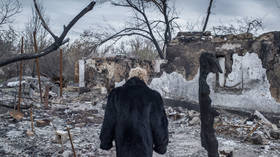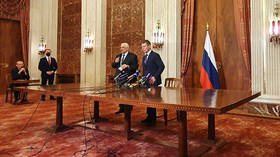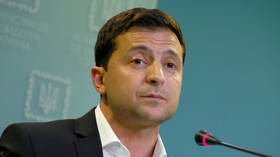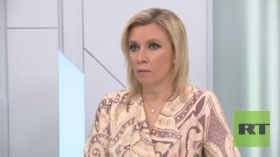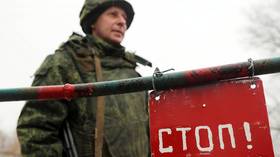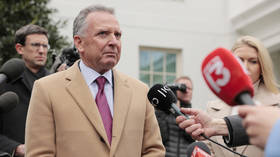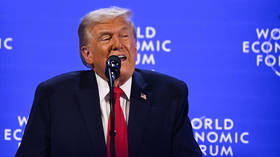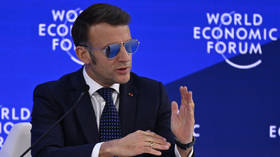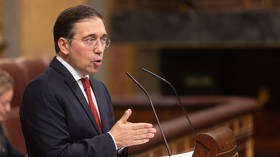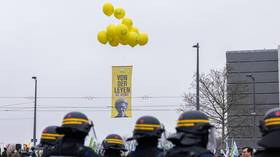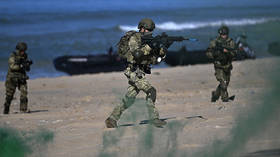Minsk remains only path to Ukraine peace
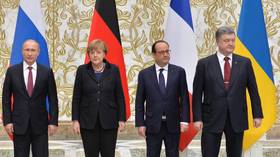
Some war scares are short; others don’t stop giving. And if they last long enough, they may even lead to a real war. The intense stand-off between Russia and the West over Ukraine that began last October has just escalated again, with US President Joe Biden and his administration issuing new, and once again urgent, alarms about, in effect, an imminent large-scale Russian invasion, complete with instructions for American citizens to leave Ukraine immediately.
Several other governments have followed suit, also calling on their citizens to flee. Influential Western commentators, such as CNN’s Christiane Amanpour, have uncritically amplified Washington’s message on social media before backpedaling a little.
A full-fledged war may or may not break out. America’s statements are notoriously unreliable, prone to errors and deliberate deception, especially when invoking the so-called ‘intelligence community’. Russia is denying any intention to invade but playing its cards close to its chest. Western support may embolden those in Ukraine who believe in defeating the separatists by brute force, never mind the Russian reaction. And, last but not least, with brinksmanship heaping up combustible material all around, the final escalation to massive open violence can occur locally, by accident or provocation.
What is clear is that this should not be happening. Obviously, in a sane world, the idea of a major war in Europe in 2022, pitting the West, if indirectly, against Russia should be an absurd fantasy, not a real possibility. How did we get here?
If you are looking for yet another one-sided tirade blaming exclusively Russia or the West, while pretending Ukraine has had no agency in creating this fiasco, better stop reading now. Instead of once again adjudicating who is to blame the most, let’s ask more important questions: Have there been alternatives? And are there alternatives now?
Yes, there have been, repeatedly, beginning with the EU-sponsored compromise of February 2014 that could have prevented the subsequent conflict entirely, if it had not been sabotaged by both shortsighted Ukrainian revolutionaries and their cowardly enemy, the former president, Viktor Yanukovych. Yet by far the single most important alternative has its anniversary today, namely the Minsk II agreement of February 12, 2015, now easily retrievable in various languages in the UN Peace Agreements Database. Officially a set of measures to implement the preceding Minsk Protocol of September 2014 – in retrospect, de facto ‘Minsk I’ – this was really a new agreement.
It’s a sad anniversary, however. Because the main story about this attempt to end by compromise the Ukraine crisis, which has now gone global, is that it has not worked. While not officially dead, the current state of Minsk II can best be described as comatose. It may still wake up one day, but for now, it’s on diplomatic life support. At the latest follow-up meeting in Berlin, Russia and Ukraine failed to make any progress at all, again.
Let that sink in for a moment. For seven years now, there has been a road map to not only de-escalation but a full settlement of this conflict, which has caused around 14,000 casualties and has brought Europe and the world to the brink of catastrophe. This, moreover, was by no means, as The Economist now bizarrely misinforms its readers, “asketch scrawled on the back of an envelope.”
In reality, Minsk II is a full-fledged international agreement. It was signed by representatives of the Ukrainian government in Kiev, the separatist areas around the cities of Donetsk and Lugansk, the OSCE, and Russia. The very difficult negotiations that preceded it directly and prominently involved the leaders of France, Germany, Russia, and Ukraine, as well as the self-declared separatist republics. It was also quickly endorsed by the UN Security Council, calling on all parties to implement it.
So, why has it not worked? First, let’s note that despite its general failure, Minsk II has had positive effects – one of its key provisions was a ceasefire. Recall that when the agreement was reached, and even for some time afterwards, there was still massive fighting. Even though the ceasefire has also not been observed, Minsk II clearly did make a long-term contribution to diminishing the intensity of the bloodshed, which means it has saved lives, even if it should have saved more.
Yet the agreement was designed – as well as signed – as much more than a ceasefire, rather a comprehensive framework for making peace. In this regard, its crucial provisions concerned the re-establishment of Kiev’s rule over the separatist areas and their border with Russia, together with Ukrainian constitutional reform and legislation to provide for decentralization in general and a special status for the separatist areas in particular. This status would regulate issues such as post-conflict amnesty, language, and social and cultural policies. Finally, and tied to all of the above, there were provisions for holding elections in the separatist areas.
Negotiated under great time pressure, Minsk II was a basic outline leaving many details to be worked out, but, despite persistent claims to the contrary, it was consistent, clear, and thorough enough to work – if there had been good will on all sides. Minsk II has not failed because it was not tidy enough, but because its inevitable lack of tidiness has been deliberately used to undermine it.
None, literally none of the sides involved have shown consistent good faith with regard to its implementation, while blaming each other for sabotaging it. Russia has taken a complicated and unproductive position by defining itself, though a signatory, not as a participating party but merely a kind of sponsor or arbiter of Minsk II. Its argument is that its text does not mention it. Given Russia’s real interests and de facto involvement in this conflict, this is a formalistic line that fails to persuade.
Ukraine has never been genuinely committed to the agreement, and is by now open in de facto rejecting it. Kiev’s main argument is that it was concluded under duress and is disadvantageous to Ukraine, threatening its sovereignty, cohesion as a state, and last but not least, aspirations to join the West, i.e. NATO. The Western powers directly involved, although maintaining the fiction that they support Minsk II, have, in reality, permitted Kiev to pursue this policy of obstruction.
The separatists, meanwhile, have also repeatedly taken actions, for instance in elections, that run counter to Minsk II and have also, on occasion, explicitly declared it dead. Together, this lack of sincerity has led to deadlock, articulated in endlessly repeated arguments over the sequence of specific steps and the meaning of terms, exemplified in the ongoing vilification, for instance, of the ‘Steinmeier Formula’.
So, a curse on all their houses and scrap Minsk II? Not quite. First, this is the one and only roadmap to peace in existence. If you can establish another one and get at least the signatures of everyone involved, then feel free to just abandon what we already have, warts and all. But not before. Second, Minsk II is repairable. It is not so flawed that it cannot work. Rather, it has not yet worked because no one has tried to constructively remedy its imperfections instead of exploiting them for one-sided gains.
It is possible to identify specific steps to make Minsk II work. Recall at this point that Minsk II’s official function was to help implement Minsk I. Counterintuitive as it may sound, what we probably need now – all of us, East and West – is the patience and good will to build a Minsk III to agree on how to implement Minsk II.
This would have to include the following elements as a minimum: Russia would have to acknowledge its real role in the process – not just an arbiter but an interested party. And that’s fine. Ukraine would have to acknowledge that an agreement forms a whole – you can’t sign the next one and then just pick and choose what you find implementable and what not. In the context of this process, Ukraine’s Western partners would have to turn themselves into honest brokers instead of not-so-secret supporters of Kiev come what may. That means, concretely, that if a ‘Minsk III’ is ever reached, the West needs to be ready to exert real, palpable pressure on Ukraine to follow through.
Finally, all sides would need to acknowledge two things: First, Crimea has to be bracketed off as a problem that can only be postponed. Second, the key underlying issue must be addressed directly – Ukraine’s geopolitical orientation. The West will have to let go of the misguided idea that a world with a Ukraine neutralized, whether its leaders like it or not, is a sin against nature. Russia will have to find convincing ways to prove that for it as well, neutrality means just that – neutrality.
Ukraine can have a good future between “orbits” – to use the language of The Economist. Inside any one orbit, probably not.
The statements, views and opinions expressed in this column are solely those of the author and do not necessarily represent those of RT.

